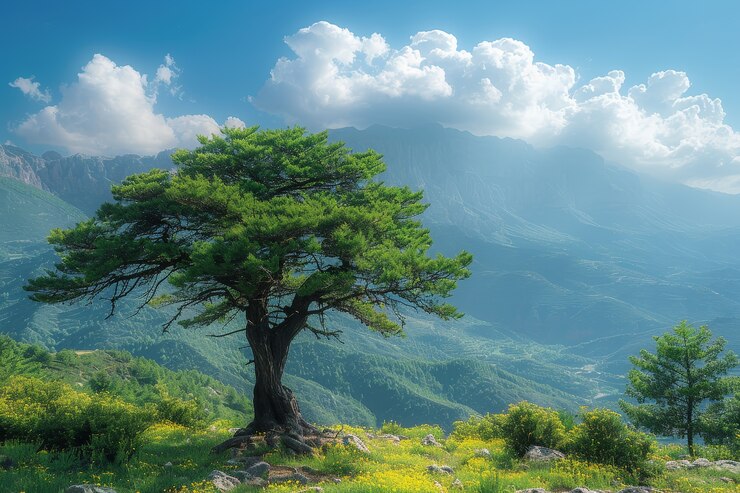Introduction
The natural world is a whole of wonders, and trees are among its most remarkable features. They provide oxygen, offer shade, shelter, and even food. Among these incredible organisms is the Maxim tree, which stands out due to its impressive size and ecological importance. This article delves into the fascinating world of this giant, exploring its characteristics, environmental role, and significance in the environment.
What is the Maxim Tree?
The Maxim tree, often called a “silent giant,” is known for its enormous size and longevity. Found primarily in temperate and tropical regions, it can grow to heights exceeding 200 feet, with some exceptional specimens reaching even greater heights. The trunk is thick and sturdy, often covered in rough, textured bark that protects it from environmental stresses.
These trees are deciduous, shedding their leaves annually. The leaves are broad and dark green and turn shades of yellow, orange, and red in the fall. While the flowers are small and inconspicuous, they play a crucial role in the reproductive cycle.
Ecological Importance
Maxim trees play a significant role in their ecosystems, acting as keystone species that provide essential resources for various organisms, from insects to birds to mammals. The large canopy offers shade, helping to regulate the temperature of the forest floor and making it a hospitable environment for other plant species.
Moreover, their extensive root systems help prevent soil erosion. By stabilizing the soil, these roots reduce the risk of landslides and other soil-related disasters, which is particularly important in regions prone to heavy rainfall.
When leaves fall and decompose, they enrich the soil with nutrients, a process known as nutrient cycling. This is vital for maintaining soil fertility and contributing to the health and sustainability of the forest ecosystem.
Biodiversity and the Maxim Tree
One of the most striking aspects of this tree is its ability to support a diverse range of life forms. Its branches and leaves provide habitats for various birds, insects, and small mammals. Many birds build their nests in its branches, taking advantage of the height and cover. Insects, such as caterpillars and beetles, feed on the leaves, while small mammals like squirrels and bats use the tree for shelter.
In addition to these smaller creatures, the tree is also home to larger animals. For example, some primates live in the upper reaches, where they find food and protection from predators. The tree’s fruit, though small, is a valuable food source for many animals, including birds, monkeys, and even humans in some regions.
The Role in Carbon Sequestration
In the face of climate change, trees like the Maxim have become increasingly important. Trees are natural carbon sinks, meaning they absorb carbon dioxide (CO2) from the atmosphere during photosynthesis and store it in their biomass. With its large size and long lifespan, this particular tree is especially effective at sequestering carbon.
Over its lifetime, a single Maxim tree can store several tons of CO2, making it a vital ally in the fight against global warming. By planting and protecting these trees, we can help mitigate the effects of climate change and promote a healthier planet.
Cultural Significance
Beyond its ecological importance, this species holds cultural significance in many regions. It is considered sacred in some cultures and prominently in local myths and legends. Its impressive size and longevity often make it a symbol of strength, resilience, and endurance.
In other cultures, the tree is valued for its practical uses. Its solid and durable wood makes it ideal for construction and furniture-making. However, due to its slow growth rate and the increasing threat of deforestation, the tree is often protected by local communities who recognize its long-term value.
Conservation Challenges
Despite its importance, this species faces several threats. Deforestation, driven by logging, agriculture, and urbanization, significantly threatens its survival. As forests are cleared, the habitat for these trees and the species that depend on them is destroyed.
Climate change is another significant threat. As temperatures rise and weather patterns become more unpredictable, the conditions necessary for these trees to thrive are altered. For example, precipitation changes can affect water availability, critical for the tree’s growth.
Invasive species also pose a threat. Non-native plants, insects, and diseases can outcompete or harm the tree, reducing its ability to survive and reproduce.
Efforts to Protect the Tree
Recognizing its importance, various conservation efforts are underway to protect and preserve it. One of the most effective strategies is establishing protected areas where logging and other destructive activities are prohibited. These areas serve as sanctuaries for these trees and the biodiversity they support.
Reforestation and afforestation initiatives are also crucial. Planting these trees in degraded areas can restore ecosystems and increase carbon sequestration. Local communities often support these efforts and understand the long-term benefits of preserving these giants.
Public education and awareness campaigns are also important. By raising awareness about the importance of these trees and the threats they face, we can encourage more people to take action to protect this valuable species.
The Future of the Maxim Tree
The future of this species depends on our actions today. With concerted efforts to protect and preserve these trees, they can continue to play their vital role in our ecosystems for generations. However, if deforestation, climate change, and other threats are not addressed, trees could become increasingly rare, with dire environmental consequences.
We must recognize the value of these trees and take steps to ensure their survival. This means protecting existing trees and promoting sustainable practices that allow us to coexist with these giants of the natural world.
Conclusion
The Maxim tree is more than just a tree; it is a cornerstone of the ecosystems in which it exists. Its size, longevity, and ecological importance make it a vital part of our natural heritage. By understanding the role of this species and taking action to protect it, we can contribute to a healthier, more sustainable environment for all.
The Maxim tree symbolizes resilience and strength in the face of modern environmental challenges. It reminds us of the interconnectedness of all life and the importance of preserving the natural world for future generations. By safeguarding this tree, we are protecting a species and ensuring our planet’s continued health.






